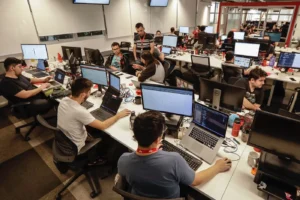Flight between cities is tested for the first time between Sergipe and Barra dos Coqueiros
The iFood drone arrived in the Northeast: from October to December 2021, this non-polluting mode was tested, in experimental flights, to make deliveries in Sergipe, between the capital Aracaju and the city of Barra dos Coqueiros.
Drone delivery tests started in Campinas, in December 2020, in partnership with Speedbird Aero and AL Drones. The innovation in Sergipe was to deliver between two municipalities. Departing from the RioMar Aracaju shopping mall, the drone crosses the Sergipe river and travels 2.8 km until landing in Barra dos Coqueiros carrying orders from the Madero and McDonald's chains.
When it arrives at this “droneport” (a specific and safe area for drones to land and take off), the meal is taken to the iFood Hub, where delivery people pick up the order and take it to the customers' homes.
The drone travels between Aracaju and Barra dos Coqueiros in just 5 minutes and 20 seconds, while traditional delivery takes between 25 and 55 minutes, depending on traffic, which is usually loaded on the only access bridge to Barra dos Coqueiros, located in north area of Aracaju.
“Our goal is to increase delivery efficiency and take technology across the country,” says Fernando Martins, head of logistics and innovation at iFood. In Campinas, for example, the use of drones reduced the travel time from restaurants at Shopping Iguatemi Campinas to iFood Hub from 12 to 2 minutes.
In Sergipe, one of the first to order a delivery that arrived by drone was lawyer Alexandre Hardman. A fan (and owner) of drones, he lives in Barra dos Coqueiros and closely followed all the stages of implementing drone delivery, as he lives close to the landing area.
“It’s very interesting to see this technological revolution arrive here in the Northeast,” says Alexandre, who can see the landing area from his window. He says he was curious to see the drone work, especially as it is a programmed model, without camera vision. “It's cheap: it comes, goes down, drops the packaging and then takes off immediately. I thought the equipment and organization were fantastic. It looks like something from a movie.”
When deliveries started, Alexandre took the opportunity to order burgers from the Madero restaurant. “If I went out to eat there, it would take two hours, because of the traffic,” he says. The lawyer approved the quality of the delivery — and made several new orders. “As we are outside Greater Aracaju, few restaurants there deliver here. Before, our choice of restaurants was restricted. Now I believe it will increase.”
Drone delivery: myth or truth?
The drone comes to my door
Myth. The drone does not go to customers' homes: its mission is to reduce travel time in the first section, from the restaurant to a pickup point (iFood Hub). From there, delivery people use traditional modes (motorcycle, bicycle or scooter) to take the meal to customers.
Drones are just over 1 meter long
True. The drones used by iFood for delivery are small: they are 1.5 meters high and 1.20 meters wide. Equipped with six engines and two GPS devices, they work with 4G technology and can fly at a speed of 32 km/h.
All deliveries will be made by drones
Myth. Drones are equipment that comes to help with demand, so they only cover part of the route, to speed up the route between the restaurant and the pickup point. Delivery drivers will continue to take meals from the pick-up point to the customer's home.
With drones, the delivery area increases
True. The advantage of drones is to cover long distances in just a few minutes. This way, it is possible to expand the service radius of establishments, as is being done between Aracaju and Barra dos Coqueiros.


